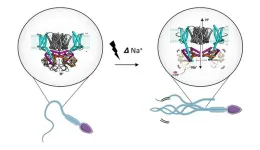Recent developments at MD Anderson include positive results from a Phase I trial for patients with TP53-mutant acute myeloid leukemia, a novel machine learning platform to identify cancer biomarkers from liquid biopsies, a tumor-specific multi-microRNA delivery system to improve treatment outcomes in glioblastoma, a combination strategy to overcome treatment resistance in KRAS-mutated pancreatic cancer, and a new target for improving treatment response in patients with stomach cancer that has metastasized to the peritoneal cavity.
Read this press release in the MD Anderson Newsroom.
Magrolimab with azacitidine well tolerated by patients with previously untreated AML
Patients with acute myeloid leukemia (AML) who are ineligible for intensive chemotherapy, particularly those with TP53 mutations, do not benefit from currently available therapies, representing a high unmet clinical need. In this Phase 1b multicenter study, researchers led by Naval Daver, M.D., examined the tolerability and efficacy of magrolimab paired with azacitidine for previously untreated AML patients. Magrolimab is a first-in-class monoclonal antibody targeting overly expressed CD47 that promotes ingestion by immune cells (phagocytosis), and azacitidine increases pro-phagocytic attack signals produced by AML cells. Together, magrolimab and azacitidine synergistically increased phagocytosis of AML cells in preclinical models. Among all trial participants, 32% achieved complete remission (CR). The trial was enriched for patients with TP53 mutations, who achieved a 31% CR rate. Side effects were manageable. Further investigation of this and other magrolimab combinations in AML is ongoing. Learn more in Journal of Clinical Oncology.
New machine learning AI platform identifies exosome biomarkers for cancer diagnoses
Liquid biopsies have emerged as a promising way to diagnose cancers with traditionally inaccessible tumors, such as pancreatic, lung and brain cancers. These fluids also contain exosomes, which are extracellular vesicles that assist in cell communication by transferring biomolecules such as DNA, RNA and proteins. Exosomes could potentially be used to identify tumor biomarkers, but no standardized isolation approaches or diagnostic methods exist to distinguish various human cancers across different biological fluids. Researchers led by Raghu Kalluri, M.D., Ph.D., developed a new machine learning-based approach to distinguish cancers using a panel of exosome-associated proteins identified from a comprehensive proteomics profile of exosomes derived from cell lines, tissues, plasma, serum and urine from 1,083 cancer and control samples. They discovered five universal exosome biomarkers present in over 90% of all cell line- and tissue-derived samples. Notably, this artificial intelligence model achieved high AUROC scores exceeding 0.91, or over 91% accuracy in distinguishing various types of cancers. This study provides further insights for potentially using plasma, serum- and urine-based exosome screening to assist with early cancer detection. Learn more in eLife.
Novel tumor-specific microRNA delivery system holds promise for glioblastoma treatment
Glioblastoma (GBM) is the most common and deadliest primary brain cancer in adults, with poor outcomes due to a lack of novel therapeutics and significant barriers surrounding treatment delivery. MicroRNAs (miRs) have been used as potential agents to regulate gene expression within tumors, but it has been unclear which miRs are most effective against GBM and how best to deliver them. To address these issues, Frederick Lang, M.D., and colleagues screened over 600 miRs and identified a set of anti-GBM miRs, comparing them against GBM data from The Cancer Genome Atlas to pinpoint the most effective agents. They generated a circular RNA construct encoding the top three miRs and packaged them into engineered exosomes. This system resulted in high expression of all three miRs in tumor cells, synergistic killing of glioma stem cells in vitro, and prolonged survival of in vivo models compared to delivering each miR individually. The study suggests this combination of miRs and novel exosome delivery system has promise as a therapeutic strategy for patients with GBM. Learn more in Neuro-Oncology.
Combination strategy overcomes treatment resistance in preclinical KRAS-mutated pancreatic cancer
Patients with pancreatic cancer and KRAS mutations, the most common gene mutation, often respond well to KRAS inhibitors initially but eventually develop resistance, limiting therapeutic options. Previous studies have uncovered immune cell-mediated pathways involved in bypassing KRAS. Noting the abundance of cancer-associated fibroblasts (CAFs) in pancreatic cancer, Jincheng Han and colleagues from the Ronald DePinho, M.D., laboratory explored the possible role of CAFs in treatment resistance. They found that NRG1, which is normally expressed in cell stroma, has ERBB2/3 receptors that are specifically expressed in cancer cells. KRAS inhibitor treatment in vivo led to higher expression of ERBB2/3, while NRG1 activation of these receptors allowed cells to escape KRAS inhibition. Using NRG1 or ERBB2 inhibition along with KRAS inhibition resulted in more sustained antitumor responses and increased survival, suggesting this combination strategy may be a viable option for patients with KRAS-mutated pancreatic cancer. Learn more in Genes & Development.
Combination strategy has potential for gastric adenocarcinoma
Patients with gastric adenocarcinoma (GAC) that has metastasized in the peritoneal cavity usually develop resistance to immunotherapy, highlighting a need to understand the underlying resistance mechanisms. Inhibition of the CD47 “don’t eat me” signal has limited clinical benefits, leading Jaffer Ajani, M.D., and colleagues to examine other potential targets as part of a combination strategy. They found that both galactin-3 (Gal-3) – which is known to promote immune suppression – and CD47 are highly co-expressed on malignant GAC cells in the peritoneal cavity and both are associated with poor prognosis, diffuse type and tumor relapses. The researchers generated lab models without Gal-3, leading to fewer macrophages and an increased T cell response. Furthermore, inhibiting Gal-3 along with CD47 increased immune cell infiltration both in vivo and in vitro, suggesting that this combined inhibition could be a promising therapeutic strategy for this patient population. Learn more in Cancer Research.
Recent awards and honors
Dimitrios Kontoyiannis, M.D., Ph.D., deputy head of Internal Medicine, was awarded the Infectious Diseases Society of America (IDSA) Society Citation Award MD Anderson at ESMO 2023
Read below for highlights from MD Anderson researchers at the 2023 European Society for Medical Oncology (ESMO) Congress. More information can be found at MDAnderson.org/ESMO.
Erdafitinib demonstrates improved responses in FGFR-altered advanced urinary tract cancers Pre- and post-surgical immunotherapy improves outcomes for patients with operable lung cancer PARP inhibitor plus immunotherapy lowers risk of endometrial cancer progression over chemotherapy alone MD Anderson Research Highlights: ESMO 2023 Special Edition In case you missed it
Read below to catch up on recent MD Anderson press releases.
Lung cancer outcomes significantly improved with immunotherapy-based treatment given before and after surgery mRNA delivered by extracellular vesicles induces immunotherapy response in glioblastoma Lactate-producing bacteria inside tumors promote resistance to radiation therapy MD Anderson hosts 2023 Leading Edge of Cancer Research Symposium Jennifer Wargo, M.D., elected to the National Academy of Medicine MD Anderson launches collaborative initiative to reduce breast cancer disparities in Houston area
– 30 –
END



